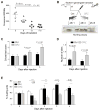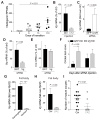The Neuropeptide Corazonin Controls Social Behavior and Caste Identity in Ants
- PMID: 28802044
- PMCID: PMC5564227
- DOI: 10.1016/j.cell.2017.07.014
The Neuropeptide Corazonin Controls Social Behavior and Caste Identity in Ants
Abstract
Social insects are emerging models to study how gene regulation affects behavior because their colonies comprise individuals with the same genomes but greatly different behavioral repertoires. To investigate the molecular mechanisms that activate distinct behaviors in different castes, we exploit a natural behavioral plasticity in Harpegnathos saltator, where adult workers can transition to a reproductive, queen-like state called gamergate. Analysis of brain transcriptomes during the transition reveals that corazonin, a neuropeptide homologous to the vertebrate gonadotropin-releasing hormone, is downregulated as workers become gamergates. Corazonin is also preferentially expressed in workers and/or foragers from other social insect species. Injection of corazonin in transitioning Harpegnathos individuals suppresses expression of vitellogenin in the brain and stimulates worker-like hunting behaviors, while inhibiting gamergate behaviors, such as dueling and egg deposition. We propose that corazonin is a central regulator of caste identity and behavior in social insects.
Keywords: ants; brain; corazonin; epigenetics; foraging; gene regulation; neuropeptides; social behavior; transcriptomes; vitellogenin.
Copyright © 2017 Elsevier Inc. All rights reserved.
Figures







Comment in
-
Model organisms: New tools, new insights - probing social behaviour in ants.Nat Rev Genet. 2017 Oct;18(10):577. doi: 10.1038/nrg.2017.70. Epub 2017 Aug 30. Nat Rev Genet. 2017. PMID: 28852225 No abstract available.
References
-
- Bonasio R. Emerging topics in epigenetics: ants, brains, and noncoding RNAs. Ann N Y Acad Sci. 2012;1260:14–23. - PubMed
MeSH terms
Substances
Grants and funding
LinkOut - more resources
Full Text Sources
Other Literature Sources
Molecular Biology Databases

